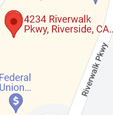Pleural Effusion
Pleural effusion is the accumulation of fluid in the chest or pleural cavity causing progressive compression of the lung and leading to shortness of breath. Malignant effusions are those secondary to lung cancer or metastatic cancers such as breast for example. The pleural effusion can be drained with a needle (thoracentesis) or chest tube (thoracostomy) but usually recurs and repetitive drainage causes discomfort and loses efficacy over time. A minimally invasive approach using video assisted technology can drain the fluid and instill talc powder to cause the lung to adhere to the chest wall (pleurodesis) and prevent re-accumulation of fluid. Video assisted talc pleurodesis is 90- 95% effective and patients usually leave the hospital 2-3 days after surgery.



















